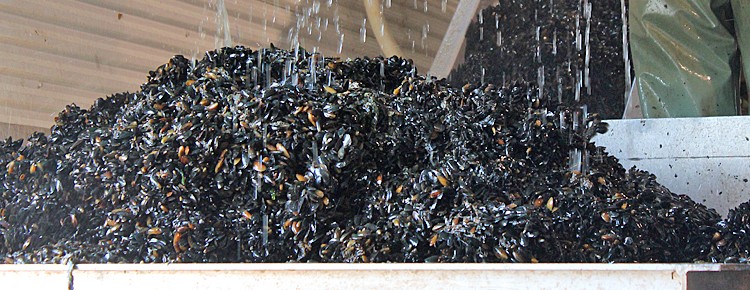
Mussel seed collection (spat collection) is performed primarily in the wild, although hatchery spat is an option in areas where wild seed aren’t as abundant. Common materials used for seed collection include fuzzy polypropylene rope, plastic mesh strip and artificial seaweed. These materials are attached to a long line and hung 30-50cm (12-20 in) apart. The mussel will collect and grow on the collection material and long line itself. Farmers have also tried rope, old socking material and finfish netting with ranging success.
In the practice of wild seed collection, the mussel spat are allowed to grow to a size between 5 and 20mm (0.20 and 0.80in) before being stripped off of their collectors. This is most often done manually on a vessel although automatic mussel stripping systems do exist and are in use primarily in Europe. Attention must be given to provide proper flotation for the long lines. Proper flotation prevents fall-off during storms and ensures safety from predators on the sea floor.
In some instances, seed collection and grow-out happen on the same rope with the mussels being left for the entire duration of the growing period. This is especially true in countries such as France where hatchery spat are grown on coconut rope and farmed on the same rope through to harvest.
We’re here to help. To receive more information on mussel seed collection and the purchase of spat collection equipment, please give us a call or send us a message using the form to the right.
